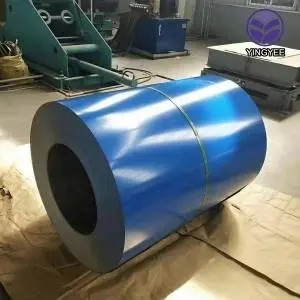
Understanding IBR Roll Forming Machines
In the construction and manufacturing industry, the need for efficient and precise metal forming processes is paramount. One such technique is roll forming, a method that allows the production of continuous lengths of metal profiles with consistent cross-sections. Among the various roll forming systems available, the IBR (Inverted Box Rib) roll forming machine stands out for its versatility and efficiency in producing roofing sheets and wall cladding.
Understanding IBR Roll Forming Machines
The operation of an IBR roll forming machine involves feeding a coil of metal, typically steel or aluminum, into the machine, which then shapes it through a series of rollers. Each roller applies a specific pressure that gradually forms the flat metal strip into the desired IBR profile. This continuous process is highly efficient, allowing for high production rates and reduced material waste, as any leftover metal can often be recycled back into production.

One of the key advantages of using IBR roll forming machines is their customization capability. Manufacturers can adjust the machine settings to produce various thicknesses and widths of sheets, catering to diverse project requirements. Additionally, the machines can be outfitted with different tooling options, enabling the production of a range of other profiles, such as trapezoidal and wave sheets, thus enhancing their application scope.
Maintenance of IBR roll forming machines is relatively straightforward, ensuring consistent output and machine longevity. Regular inspections and timely replacements of worn parts are vital to maintaining the quality of the resulting products. Furthermore, advancements in technology have led to the development of automated control systems, enhancing efficiency and precision in the manufacturing process.
In summary, IBR roll forming machines are indispensable in the modern construction landscape. Their ability to produce strong, efficient, and aesthetically pleasing panels makes them a preferred choice among builders and architects. As the demand for sustainable and durable building materials continues to grow, the role of IBR roll forming machines in meeting these needs will undoubtedly expand, solidifying their position in the industry.